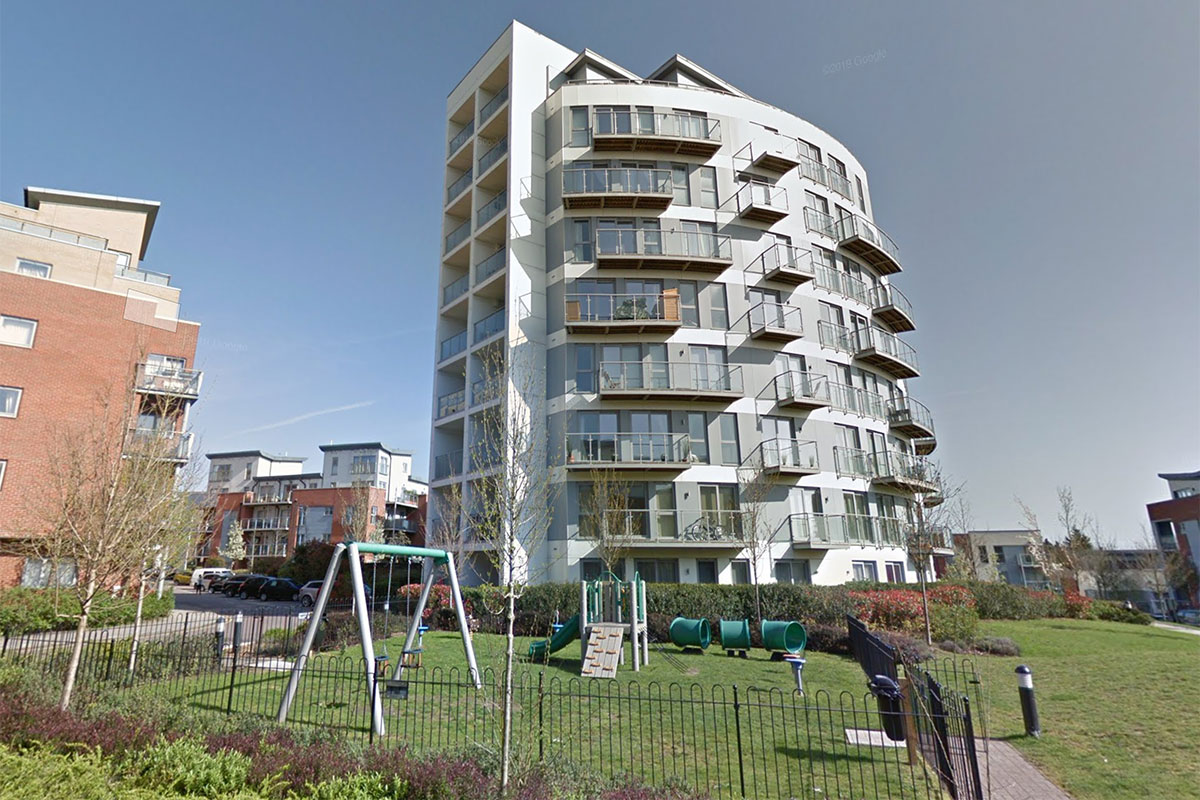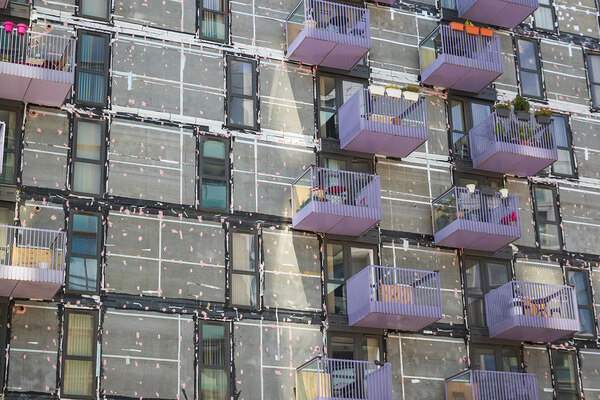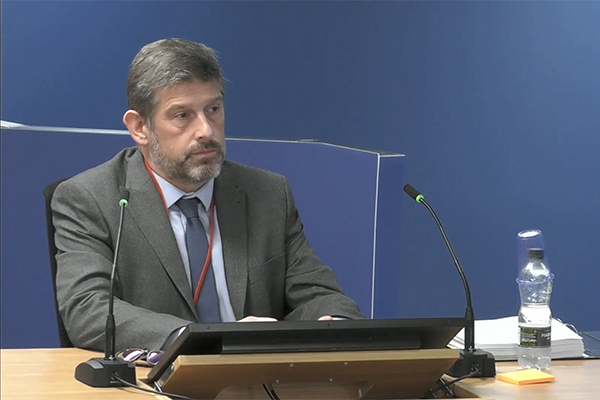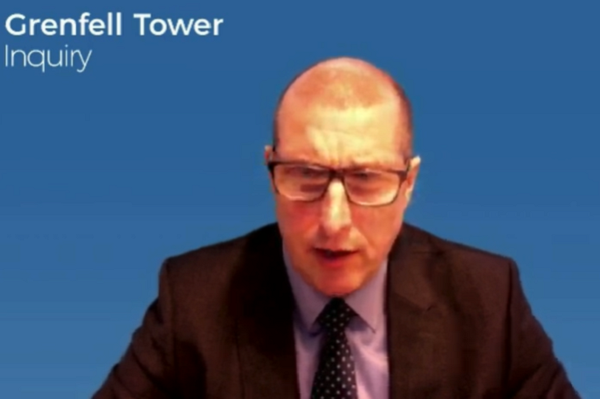You are viewing 1 of your 1 free articles
Leaseholders call for Kingspan to pay for removal of Grenfell insulation from blocks
Leaseholders facing massive bills to remove combustible Grenfell-style insulation are calling on the manufacturer of the material to fund removal.

Kingspan Kooltherm K15, fabricated out of a combustible foam, made up a small part of the cladding system installed on Grenfell Tower. It has also been fitted to thousands of high and medium-rise buildings in the UK.
Residents of many of these buildings face crippling bills to remove the cladding, amid concern about the use of combustible materials on facades in the aftermath of the Grenfell Tower fire.
But these residents are now calling on Kingspan to stump up the cash – following damning revelations in the inquiry into the fire in recent months about the way the product was tested and marketed by the firm.
Kingspan – a multinational business and industry leader in the insulation sector – turned over €2.9bn globally in 2020, making a profit of £321.3m.
Alison Hills, of eight-storey Opus House in St Albans, who faces a £150,000 bill for the remediation of her home, told Inside Housing: “We would like Kingspan to pay for remediation themselves. They need to pay for it in my view. That will reduce the burden on the taxpayer.”
In a statement, the firm said it had passed numerous large-scale tests since the Grenfell Tower fire and “firmly believes” that systems which match these tests are safe and noted government has confirmed the product can remain on buildings in some instances. It says where it recommended use of products in a system not justified by a test, it is “committed to acting swiftly to evaluate what action is required”.
The inquiry has revealed that Kingspan began marketing its insulation for use on high rises in 2005, following a successful large-scale fire test. This only justified the product’s use in the specific system tested, but it was sold for much wider use, with the firm in some instances writing “letters of comfort” to developers assuring them the product was suitable.
In 2006, it changed the way it made K15 and when it ran new tests on systems involving the product in 2007, they failed, with an internal report branding one “a raging inferno” and noting that the insulation was “burning on its own steam”.
In October 2020, shortly before this was revealed by the inquiry, Kingspan withdrew the 2005 test report, which had been used on marketing literature for K15 since 2005, admitting that fire test information used was “not representative” of the product now on the market.
Lord Greenhalgh, the minister responsible for building safety, told MPs earlier this month that he would like to see product manufacturers contributing to the costs of fire safety remediation.
Ms Hills and fellow residents at Opus House face individual bills of around £150,000 for all fire safety defects to be remediated and the mounting costs have caused he significant personal distress.
“My mental health took a nosedive. I can’t sleep, can’t eat, can’t concentrate. I had to move out of the flat, which is now sitting empty. I am a solicitor and if I become bankrupt I will lose my license to practice,” she explained.
Steph Pike, a leaseholder at The Milliners building in Bristol, has urged Kingspan to cover costs for removal of the insulation.
Ms Pike bought her property in November 2017 – after the Grenfell Tower fire – and was told the building was safe.
She said: “I asked all the right questions about cladding and fire safety before I bought and I received assurances on those. Since our waking watch was installed in November 2020 it has been all-consuming. It has taken over my life and it has made me anxious. I’m not sleeping or working properly.”
There are 109 apartments at The Milliners building – an office-to-residential conversion – and leaseholders face a combined remediation bill of £7.6m, which does not include waking watch costs of £4,500 per week.
Ross Taylor is a leaseholder at The Pavillions in Tottenham Hale, where he faces a £50,000 bill for fire remediation costs including the removal of Kingspan K15 insulation.
The cladding system was signed off via a desktop study and, as a result, five of the six blocks on the north London development have K15 on them.
He said: “We wanted to start a family and would have moved out around 18 months ago but because of these crippling bills we can’t do that now. I’m really worried about the costs that are stacking up and how it affects our future.”
He added that Kingspan should pay.
Ms Hills and Mr Taylor are both awaiting a response about their applications to the £3.5bn Building Safety Fund, but they said if that fails they would consider legal action against Ireland-based Kingspan.
While the government has promised to cover costs of cladding remediation in buildings taller than 18m, this is likely to fall some way short of the full bill for making the blocks safe.
Ms Pike’s property received a rejection from the Building Safety Fund on the basis of height, despite the building being taller than 18m. The rejection is currently being appealed.
Ms Pike said she would also consider taking Kingspan to court. She said: “I have been focusing on other priorities so far but I would definitely consider legal action, especially if there was a class action.”
Kingspan’s full statement
“Kingspan is committed to providing proactive and swift responses to any queries regarding the use of K15 in high-rise residential buildings. We have established a dedicated team and streamlined process to support fire engineers and building owners, and provide reassurance on the safe use of K15 in high-rise-residential buildings.
“Although Kingspan withdrew three BS 8414 system tests in October 2020 we also advised that all three systems benefited from subsequent retesting using current K15. Kingspan now holds fifteen successful BS 8414 tests using current K15.
“Kingspan firmly believes that systems incorporating K15, that have been successfully tested to BS 8414, and correctly installed in the manner in which they were tested, are safe. MHCLG has provided guidance on the circumstances where retention of K15 in existing cladding systems on high rise residential buildings can be supported.
“Where K15 was recommended in a system by Kingspan for use in a particular building, and the existing suite of BS 8414 tests does not support that use, then we are committed to acting swiftly to evaluate what action is required, and to providing remediation as appropriate.
“We recognise the concerns many people have as a result of the wider issue of safety of cladding systems in high-rise residential buildings. Residents who have a query or concern should in the first instance raise the matter with their building owner who should contact us directly and can be assured of our full engagement.
“We will shortly be publishing an advice note in relation to K15 to assist building owners and fire engineers reviewing previous use of K15 in cladding systems on high-rise residential buildings.”
Sign up for our fire safety newsletter
Already have an account? Click here to manage your newsletters












